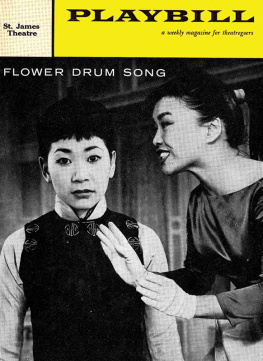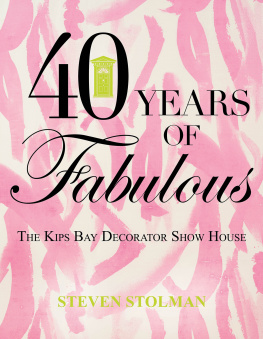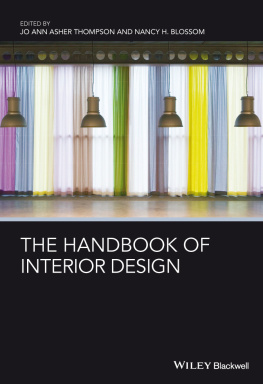Scalamandr
Haute Dcor
Steven Stolman

Scalamandr
Haute Dcor
Digital Edition 1.0
Text 2013 by Ronkonkoma Operations, LLC
See Photographic Credits section
All rights reserved. No part of this book may be reproduced by any means whatsoever without written permission from the publisher, except brief portions quoted for purpose of review.
Gibbs Smith
P.O. Box 667
Layton, Utah 84041
Orders: 1.800.835.4993
www.gibbs-smith.com
ISBN: 978-1-4236-3495-9
For my parents, Gloria and Joseph Stolman, my sisters, Karen Stolman Parker and Stacey Stolman, and my other half, Rich Wilkie. Thank you for your unconditional love, your unwavering support and for simply putting up with me.
Introduction
My love affair with the House of Scalamandr began, unbeknownst to me, in peppy, preppy, suburban West Hartford, Connecticut. Our imposing brick Georgian colonial house came semi-decoratedwith sparkling crystal chandeliers and a grand circular staircase with a hand-painted mural of Hyde Park complete with nannies pushing prams. Actually, it was just printed wallpaper, but someone went into it with a paint brush afterwards and added beige accents. This was in total contrast to the furniture my parents owned: mid-century modern stuff bought as young marrieds at the Herman Miller outlet in Bostonwonderful pieces like an Eames molded fiberglass rocker, which I now have, and a pair of Jens Risom chairs, which they still own and use to this day.
My mom hired an interior decorator right out of central castingtall, erudite and (it was the late 60s, remember) practically incandescent. Our mid-century treasures were banished to the far reaches of the house and in their place arrived glowing Baker gallery tables, a champagne silk striae loveseat, an apricot linen velvet bergre and a long, low sofa covered in tobacco silk damask that I now know was Scalamandr. Oh, and there were also champagne silk moire curtains with swagged valences. I thought it was prettyfussy, but pretty.
I loved that Scalamandr sofa. It was soft and cushy and smelled faintly of Norell perfume, lipstick and scotchthat evocative smell that filled the house when company came over and the good china and silver came out. Those memories of good food, lively conversation and stylish surroundings set the stage for a lifetime spent as a serial entertainer. Nothing pleases me more than the elements associated with gracious hospitality, and nothing says gracious hospitality more than Scalamandr. So when I was asked to serve as president of this most august of companies and help escort it into its future, I honestly had no choice but to say, Yes!
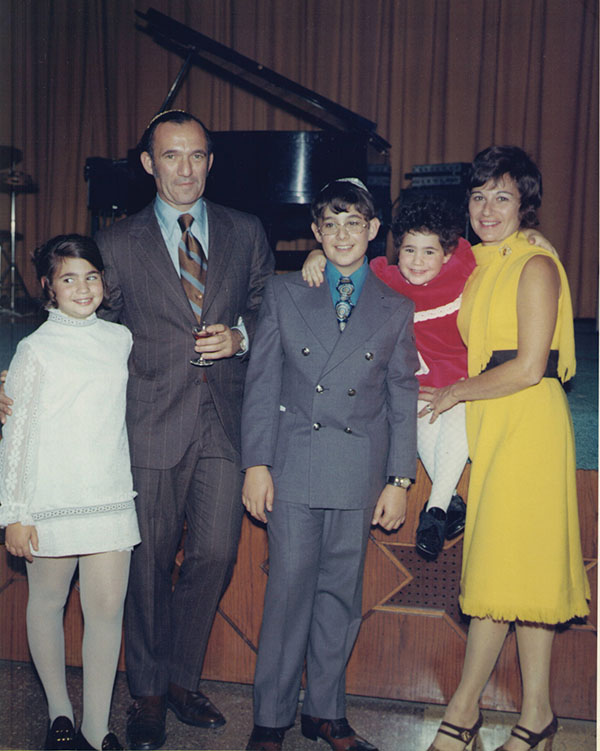
My Bar Mitzvah, 1970.
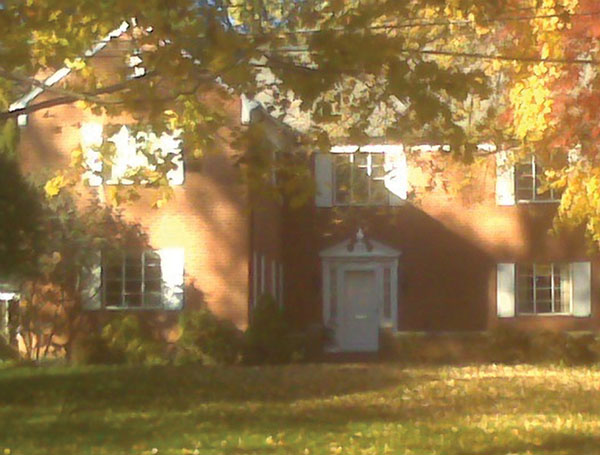
Our wonderful brick Georgian in West Hartford, Connecticut.
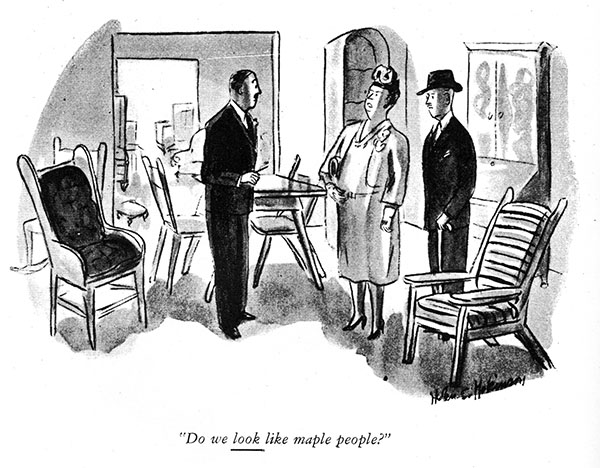
Cartoon by Helen Hokinson.

Eames molded plastic rocker bought by my parents at the Herman Miller Outlet just prior to my birth. I still have it!

One of a pair of Jens Risom chairs still living in my parents house.
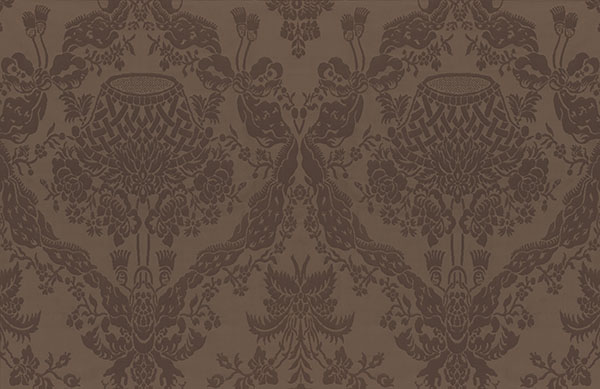
Gabriel silk damask in tobacco brown.
I loved that Scalamandr sofa. It was soft and cushy and smelled faintly of Norell perfume, lipstick and scotch...
Beginnings
The New York that Italian immigrants Franco and Flora Scalamandr found was that of a swirling, Charleston-dancing metropolis fueled by the Jazz Age and giddy with the rapidly inflating stock market. The beginning of 1929 bore no hints of the financial disaster that lay ahead. Indeed, glamorous art deco towers such as the Empire State Building and the Chrysler Building had recently opened, and all looked optimistic as the conventions of modern living took hold, zooming New Yorkers to new heights in high-speed elevators.
Its ironic to note that so many American heritage companies were born in 1929. While the Scalamandrs were making a name for themselves in decorative textiles, Mrs. John L. Strong started a social stationery business that continues to occupy the top tier in its classification, and Macys opened its doors. Whoda thunk it?
Franco Scalamandr came to America in 1923, in the wave of hundreds of thousands of Italians seeking to flee the oppression of the Mussolini regime. Educated as an engineer, he found a job at Westinghouse. As his English improved, so did Francos employment prospects, ultimately landing him a position as a draftsman and then a teacher of architectural design at the Sealy School of Interior Design in New York. There, he aligned with Mrs. Sealy to import Italian fabrics and furnishings, which led to the idea that if he could actually create appropriate silk fabrics stateside, there might be a market for them. Beginning with one weaver and a single loom in Paterson, New Jerseyalready a hub of textile productionFranco produced his first yardage. By early 1929, he had saved enough money to purchase an old brick mill in Long Island City, thus laying the groundwork for what would become Americas leading manufacturer of fabrics and trimmings.
Word of Scalamandr Silks spread quickly, even in the face of the Great Depression. By now, Franco had met and married young Flora Baranzelli, a gifted painter who came from a long line of Italian artists. The Scalamandrs were the perfect dream team, combining Floras eye and elevated taste with Francos textile manufacturing expertise. Together, they built an environment of tremendous creativity and ability, and word spread rapidly about an extraordinary couple with unique skills in textile design and production.
As water seeks its own level, skilled artisans began flocking to Scalamandr in search of work. Italian and other European weavers experienced with jacquard looms were hired, and more equipment was purchased, including machines for winding, quilling, warping and cutting jacquard cards. A trimmings company already in the building was acquired, and soon a full-scale dying operation was added, requiring the company to take over the entire 50,000-square-foot building. At last, all the necessary pieces of the puzzle were in place, and Scalamandr was perfectly poised to become Americas leading producer of exquisite decorative fabrics, wallcoverings and trims.
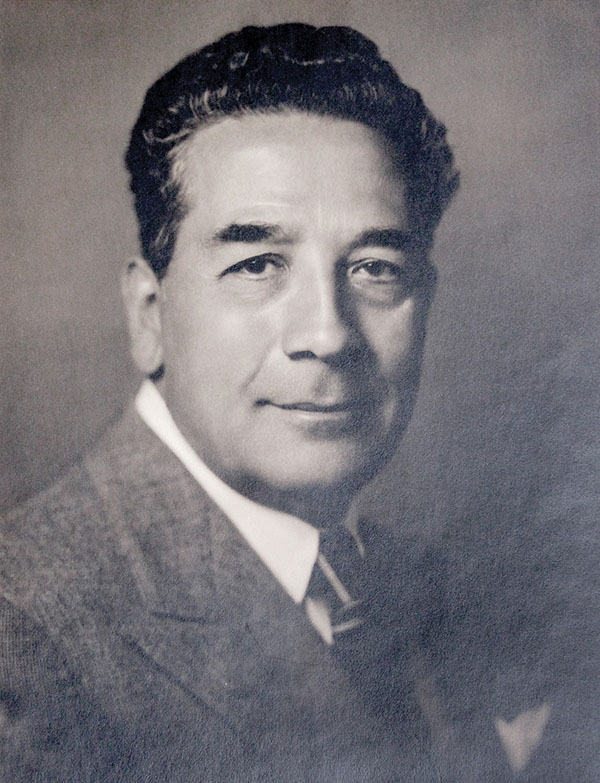
A young Franco Scalamandr soon after his arrival in New York.

